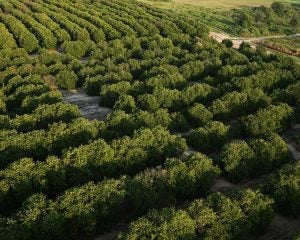As Hurricane Ian plowed into the state of Florida late last month, agriculture producers were some of the hardest hit.
Hurricane Ian dropped nearly 20 inches of rain by the time it exited Florida. The extensive rain submerged fields and made farming land hard to access. The high winds and flooding knocked fruit from trees, uprooted recently planted fall vegetables, drowned sod and turf, and entirely submerged honeybee colonies. Livestock and dairy industries suffered too, with damage to structures, irrigation systems, and machinery.
It’s estimated that 50 percent to 90 percent of citrus revenue was lost; as Florida is responsible for most orange juice production, juice prices will rise. Additionally, October is the start of fall vegetable production, including broccoli, lettuce, carrots, Brussels sprouts, and radishes. Strong winds and extensive rain have flooded fields and ripped vegetables from their roots, and towns such as Clewiston and Belle Glade have lost more than 21 percent of their lettuce revenue.

Livestock — from honeybees to cattle to dairy cows — were lost during the storm. Beekeepers lost about 45 percent of their colonies due to the high winds, and hives were damaged resulting in a loss of equipment. This loss has pushed honey production down by 25 percent.
Hurricane Ian barreled through about 40 percent of Florida’s beef cattle industry, destroying barns and fences. The beef industry is one of the most economically boosting industries in Florida, but after the storm, Florida’s cattle market is estimated to drop by about 7 percent. In a recent report done from Dakin Dairy in Manatee County, Florida, they lost 250 production cows due to flooding or debris.
Approximately 17 percent of Southwest Florida’s dairy production barns and equipment were severely damaged as 150 mph winds ripped through the state of Florida when Hurricane Ian hit, ripping greenhouses to shreds. Fruits and vegetables that are primarily grown under the comfort of greenhouses were destroyed.
Unfortunately, there is no silver bullet answer to preventing damages like this in the future, but there are ways we can be better prepared for future storms. Producers can prepare by employing technology to pump water off properties to accommodate for the excessive rainfall. Farmers and ranchers can also work to move animals to higher ground, create natural barriers to increase resilience, and secure anything that could be swept away by wind or water. Consumers who are concerned can donate to local organizations such as the Cattlemen’s Disaster Relief fund, FDACS, or other agriculture agencies to help in times of need.
Agriculture is the building block to every little thing that we as consumers depend on. The impact of Hurricane Ian on agriculture will be enough for lives to be changed, income to be lost, and jobs to be wiped away. Hurricane Ian hurt so many, but next time, we must be prepared for a storm’s effect on our agricultural industry.
Paige Cruse is a student at Fort Pierce Westwood High School, officer in FFA, and an activist with the American Conservation Coalition.



